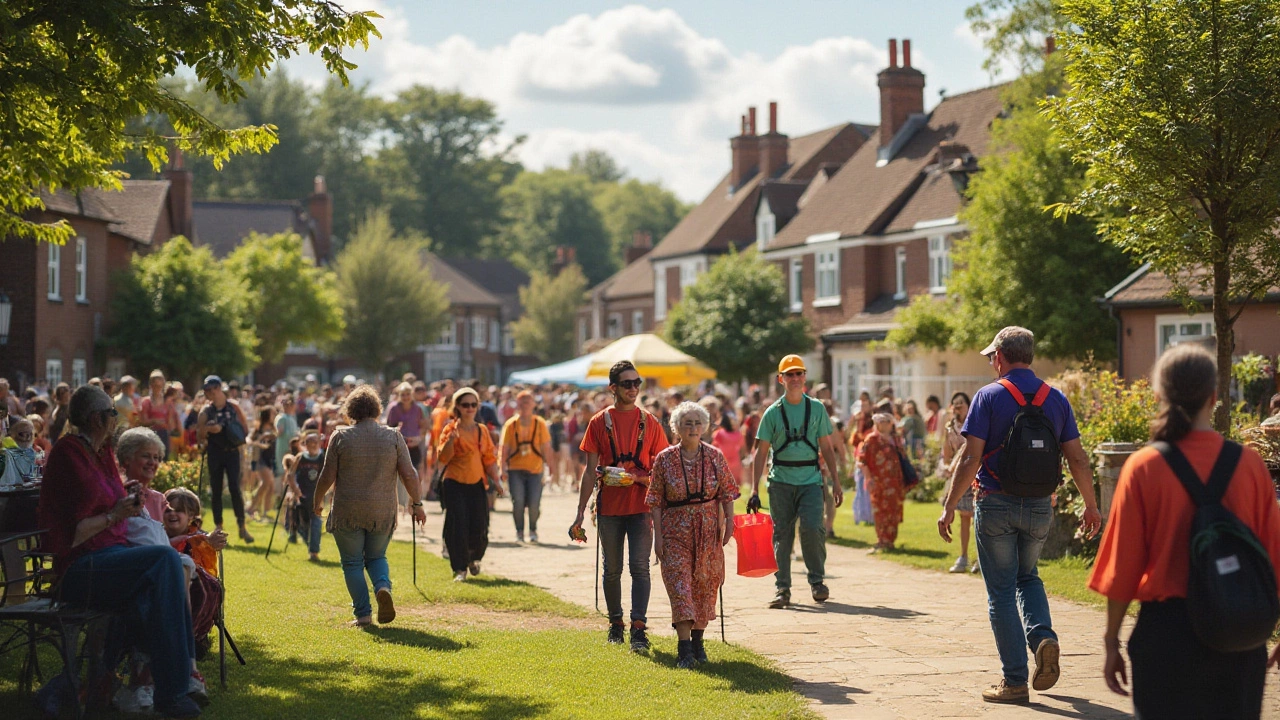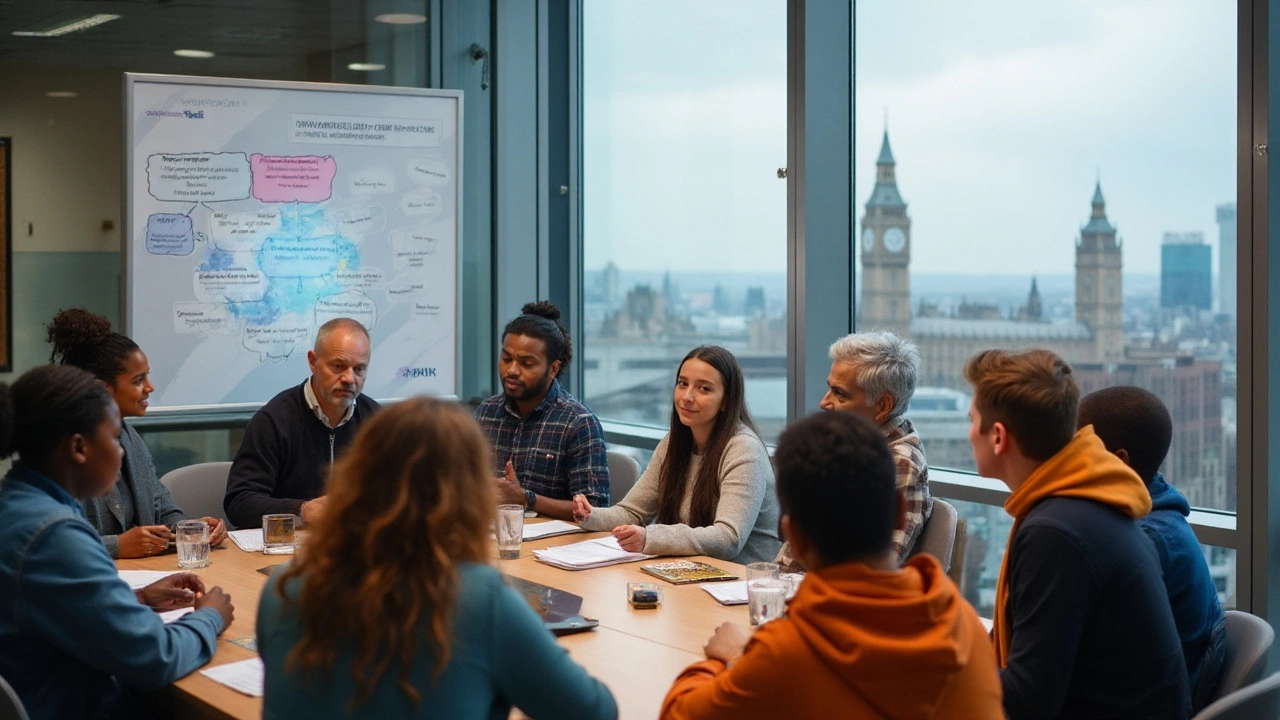Connecting with communities goes beyond a simple exchange of information. It's about creating lasting bonds and understanding mutual goals for positive development. Each community is unique, requiring tailored strategies to effectively reach and engage them.
To embark on this journey of community outreach, understanding the six main aspects is crucial. From building trust and crafting bespoke communication plans to embracing diversity and leveraging the power of technology, these components form the backbone of successful outreach programs. Dive into these aspects to enhance your engagement efforts and foster stronger community ties.
- Building Trust and Credibility
- Tailoring Communication Strategies
- Cultivating Collaboration and Partnerships
- Nurturing Inclusivity and Diversity
- Leveraging Technology and Social Media
- Evaluating Impact and Sustainability
Building Trust and Credibility
Establishing trust and credibility in community outreach begins with consistent, honest communication. Communities respond positively when they perceive sincerity and integrity from organizations. People need to trust that your intentions align with their best interests before they open up to engagement. An organization should prioritize transparency by being clear about goals and processes, which helps in alleviating skepticism. It’s important to note that trust-building is not a one-time effort; it requires ongoing commitment to the values and promises made to the community.
Engagement with communities can be bolstered by sharing past successes and testimonials. When an organization provides real-world examples where its intervention yielded positive outcomes, it sets a precedent of reliability. This connects with people on a personal level, making outreach efforts more relatable and digestible. Establishing credibility can also be supported by engaging with local leaders and stakeholders who already hold the community’s trust. These leaders can endorse your initiatives, enhancing your organization's acceptance and effectiveness.
"Trust is built with consistency” - Lincoln ChafeeConsistency in message and actions speaks volumes, and over time, it cements a reputation that community members can rely on. Steps to ensure trust include regular feedback loops where the community's voice is not only heard but visibly integrated into the organization’s plans. Organizations should also be responsive in addressing concerns or questions in a timely manner. Such responsiveness shows respect for the community’s input, further strengthening relationships.
Acknowledging mistakes candidly and correcting them promptly can also solidify trust. No entity is infallible, and displaying genuine commitment to learning from missteps demonstrates integrity. The key SEO keyword phrases like community outreach and building connections emphasize the desire to foster positive and impactful relationships. Overcoming initial barriers to trust may seem challenging, but by prioritizing open communication and steadfast integrity, outreach initiatives can establish a credible presence within any community.
Tailoring Communication Strategies
When it comes to community outreach, it's crucial to recognize that a one-size-fits-all approach rarely works. Each community has its unique characteristics, needs, and preferences, so crafting communication strategies that resonate is key to success. Engaging with different demographics requires understanding their cultural backgrounds, language preferences, and even the platforms they use most. This personalized approach not only shows respect but also enhances the likelihood of effective interaction and message absorption. In essence, knowing your audience deeply allows for messages that are not just heard, but also embraced and acted upon.
To refine these strategies, start by conducting thorough research on the community you wish to engage with. Look at demographic data, historical context, and social dynamics. Important elements such as local values, traditions, and past interactions with outside organizations can shed light on how to approach communication. A communication plan rooted in this understanding not only conveys your message clearly but aligns it with the community's priorities, fostering a sense of shared purpose and trust. Personalization goes beyond language; it encompasses the tone, timing, and even the format of your communication, ensuring accessibility and relatability.
Communication works for those who work at it.
— John Powell
One successful tactic in tailoring communication involves choosing the right channels. Some communities might prefer traditional methods like print media and community meetings, while others might respond better to digital platforms such as social media and email. The key is adaptability; monitoring community responses and being nimble enough to adjust strategy as needed demonstrates commitment to genuine engagement. Evaluating different platforms' effectiveness offers insight into where to focus future efforts. Moreover, utilizing multiple channels allows for a broader reach and accommodates varied preferences within the same community, enhancing inclusivity in your outreach efforts.
Engagement strategies should include continual feedback loops, providing community members with simple, straightforward methods to voice their opinions and reactions. These responses are invaluable for guiding adjustments in your strategy. Observations and feedback are not merely for the sake of improvement but serve to inspire a true dialogue, making communication a two-way street. This approach empowers individuals within the community, giving them a stake in the conversation and ensuring they feel heard and valued. Encouraging active participation bolsters trust and paves the way for sustained relationships and opportunities for collaboration.
Lastly, creating messages that tell stories can significantly enhance engagement. People are naturally drawn to narratives that illustrate real-life impacts and experiences. Stories humanize messages, transforming abstract ideas into tangible outcomes and encouraging emotional connections. When community members see themselves reflected in these narratives, the communication bridges become sturdier, inviting broader involvement and shared learning. Powerful stories, combined with visual elements like photos and videos, often yield the most effective and memorable outreach results, leaving a lasting impression that resonates far beyond the initial message delivery.

Cultivating Collaboration and Partnerships
Strong collaboration and thriving partnerships can propel community outreach initiatives to new heights. These alliances allow for resource sharing, enhance project visibility, and bring together a broad range of expertise. The key is to find partners whose mission aligns with yours, creating a synergy that not only benefits immediate targets but also serves the broader community agenda. Partnerships can include local businesses, non-profits, schools, and even governmental entities. By pooling skills and resources, these collaborations can generate innovative solutions to community challenges, ensuring that outreach programs achieve tangible results.
Effective partnerships flourish on a foundation built from mutual respect and clearly defined roles. It's crucial to establish open communication channels and set collective goals from the outset to prevent any misunderstandings. Regular check-ins and evaluations also play an important role in ensuring that all parties are aligned and on track to meet their objectives. A successful example of such a partnership comes from the collaboration between public libraries and local tech firms, which often leads to digital literacy workshops for underserved demographics. This not only bridges the digital divide but also strengthens community ties and fosters future innovation.
One illustrative success story comes from XYZ Nonprofit, which was able to expand its reach by partnering with various local entities to deliver essential services to underrepresented communities. As a result of careful planning and shared resources, they successfully increased their service reach by 300% in just two years. Such impressive outcomes underscore the strength that effective partnerships can bring.
"Together we can achieve more than any of us could alone," said Sara Anderson, Director of XYZ Nonprofit, highlighting the essence of collaborative efforts.
To effectively build these valuable partnerships, consider hosting regular networking events and community forums where potential partners can share insights and experiences. This helps build trust and showcases a willingness to collaborate. Remember to formalize partnerships through agreements or memorandums of understanding to outline responsibilities clearly. Keep in mind that flexibility is vital; as community needs evolve, partnerships should be dynamic enough to adapt accordingly. It's also beneficial to celebrate joint successes, which can further strengthen the partnership and motivate all those involved to continue pushing forward with a unified vision.
Nurturing Inclusivity and Diversity
Inclusivity and diversity are not just buzzwords—they are crucial components of effective community outreach. They ensure people from all backgrounds feel represented and heard. Creating an inclusive environment invites varied perspectives and ideas, enriching the dialogue and promoting understanding. This process begins by identifying and breaking down existing barriers that might limit participation. Often, these barriers are unseen, entrenched in historical or cultural contexts, making it imperative to approach them with sensitivity and awareness.
Embracing inclusivity means being intentional about inviting everyone to the table. It may involve changing entrenched practices or adopting new methods to ensure broader participation. For example, hosting community events at varied times and locations can accommodate those with differing schedules and travel limitations. Similarly, providing resources in multiple languages or formats (e.g., braille, large print) can go a long way in reaching wider audiences. An inclusive setup respects individual differences while fostering mutual respect and collaboration.
Diversifying outreach efforts means acknowledging and celebrating the unique characteristics of each group within a community. This approach requires a conscious effort to understand differing cultural norms and practices. It is beneficial to conduct cultural awareness training for team members involved in community interactions. Understanding cultural differences is key to building trust and credibility, as it showcases a willingness to adapt and respect community needs and preferences. Including diverse voices in planning and decision-making processes further strengthens these efforts.
Engagement strategies benefit greatly from a diverse team. A team that reflects the community's diversity is better positioned to understand and address varied concerns. Collaboration with community leaders who hold sway and understand local intricacies can also be invaluable. These collaborations should be genuine and not mere token gestures. Here, relationship-building becomes essential, requiring time, patience, and continuous engagement. Inclusion initiatives help build stronger ties, fostering a sense of belonging that transcends mere participation.
"Diversity is being invited to the party; inclusivity is being asked to dance." – Verna Myers
Technology can play a pivotal role in supporting inclusivity and diversity in community outreach. Online platforms can provide a voice to those who are unable to attend in-person meetings, whether through live streaming events or hosting virtual forums. Digital surveys and feedback tools also democratize participation, allowing wider community input. However, it's important to address the digital divide by ensuring access to the necessary technology and resources for all community members, thereby avoiding unintended exclusion.
Statistics from the Pew Research Center highlight the importance of inclusivity in social media engagement. As of recent studies, 72% of public commenters look for organizations that reflect diverse values and demonstrate inclusivity in their online presence. Such data emphasizes the need for organizations to maintain transparent online channels, engaging and responding to diverse community needs effectively. Visible commitment to diversity and inclusivity online can mirror on-ground practices, reinforcing an organization's core mission and values in the public sphere.

Leveraging Technology and Social Media
Technology has revolutionized how we connect with communities, providing unprecedented access and interaction opportunities. Social media platforms are at the forefront, enabling organizations to reach their audiences quickly and efficiently. By leveraging technology effectively, not only can you expand your reach but also personalize your engagement with various groups. Social media can act as the heartbeat of your community outreach, driving conversations, sharing valuable information, and increasing awareness for important causes.
Creating meaningful content is key when using social media for community outreach. Engaging posts that tell a story can create emotional connections with your audience. These stories should reflect the community's values and goals, drawing them into the conversation. Posting regular updates on platforms such as Facebook, Instagram, Twitter, and LinkedIn can keep your audience informed and engaged. Viewing these platforms as two-way communication channels instead of just broadcasting tools will help you build engagement strategies that foster dialogue and connection.
Utilizing data analytics is another crucial aspect of leveraging technology. Analyzing engagement metrics can provide valuable insights into what works and what doesn't. This data-driven approach can be instrumental in fine-tuning your outreach efforts, ensuring that messages reach the right people at the right time. It involves keeping track of metrics such as reach, engagement rates, and conversion statistics, which reveal patterns and preferences among your audience. Having this information at your fingertips allows you to refocus and adapt your strategies for better results.
As renowned digital strategist Gary Vaynerchuk once said, "Social media platforms are tools. Real-time awareness and instinct is what will drive success."
Another way to enhance community outreach is through collaboration with local influencers who resonate with your audience. Influencers can amplify your message and provide a relatable voice, increasing your outreach program's credibility. Partnering with figures who already have a following in your community can significantly extend your reach and bring fresh perspectives. It’s not just about numbers; it's about integrity and genuine connections between the influencer and their followers.
By incorporating storytelling techniques and tapping into the power of visual content, you can drive home powerful narratives. Videos, infographics, and photo stories can capture attention and communicate complex information in digestible formats. Using a multi-channel approach, which includes a mix of audio-visual and text-based content, ensures that you cater to different audience preferences, enhancing your organization’s presence across digital platforms. With these strategies, you can elevate your outreach efforts, fostering deeper relationships and greater impact in your community.
Evaluating Impact and Sustainability
Understanding the success of your community outreach efforts requires a keen eye on impact and sustainability. Often, amidst the buzz around engagement, the crucial aspect of measuring actual outcomes might get overshadowed. To gauge real change, it's pivotal to set clear objectives right from the start. Establishing specific, measurable, achievable, relevant, and time-bound (SMART) goals can guide you in assessing whether your outreach initiatives are on track. These goals should reflect both immediate outcomes and long-term impacts. For example, an outreach program aimed at increasing community participation in local events might set goals related to attendance numbers, as well as broader objectives like the sense of community cohesion measured through surveys or interviews.
Once goals are set, the next step involves gathering data. This means not only relying on quantitative data like attendance figures or social media activity but digging deeper into qualitative feedback from community members. Surveys, focus groups, and even informal discussions can provide invaluable insights into how your activities are perceived and whether they resonate with your audience. According to Community Tool Box, an essential resource for public outreach, it is crucial to involve community members themselves in this evaluation process.
“Sometimes those who are the intended beneficiaries of a program can offer the best insights into its effectiveness and areas for improvement,” notes Vision Launch Media.Keeping channels open for ongoing feedback can help refine your approach and foster an adaptive, responsive strategy.
Evaluating impact also involves reviewing resources used against the outcomes achieved. It's vital to consider whether the input, in terms of time, funding, and human resources, is justified by the results. This cost-benefit analysis doesn't just measure efficiency but can also highlight areas to tweak or expand in future efforts to enhance outreach success. A well-rounded evaluation of these aspects not only highlights achievements but also identifies areas needing support. Such comprehensive evaluation can inform whether certain methods should be replicated, adjusted, or abandoned altogether.
Beyond immediate results, sustainability is about ensuring the lasting impact of your outreach activities and their resilience over time. Are the changes you're implementing self-sustaining or do they rely heavily on external support? Building community capacity is at the heart of sustainability, empowering people within the community to continue the work independently. It's the difference between giving fish and teaching fishing. Evaluating sustainability often involves looking at whether the program has effectively built local skills, resources, or networks. For instance, a community gardening initiative would be deemed sustainable if it inspires local residents to take ownership and perpetuate the project beyond its initial phase.
The inclusion of modern technology can serve as a significant sustainability factor. According to recent studies, over 70% of successful outreach programs incorporate digital strategies to maintain engagement momentum once the initial program phase has ended. This involves creating online communities or platforms that enable ongoing interaction and resource sharing, thus adding a digital dimension to community building. Leveraging technology inthis way provides a platform for continual engagement and empowers communities to adapt over time.
